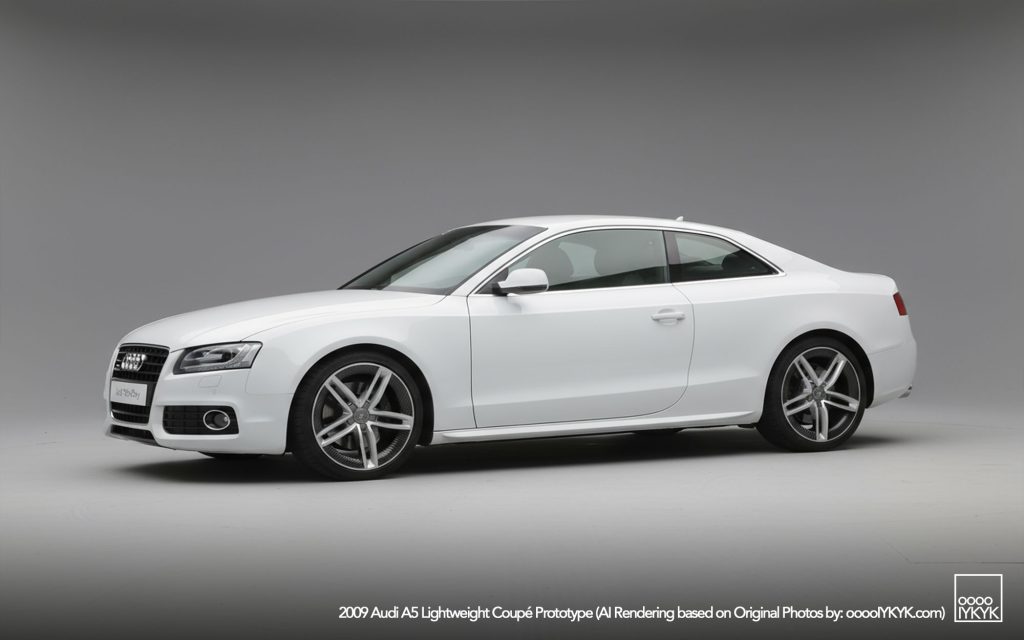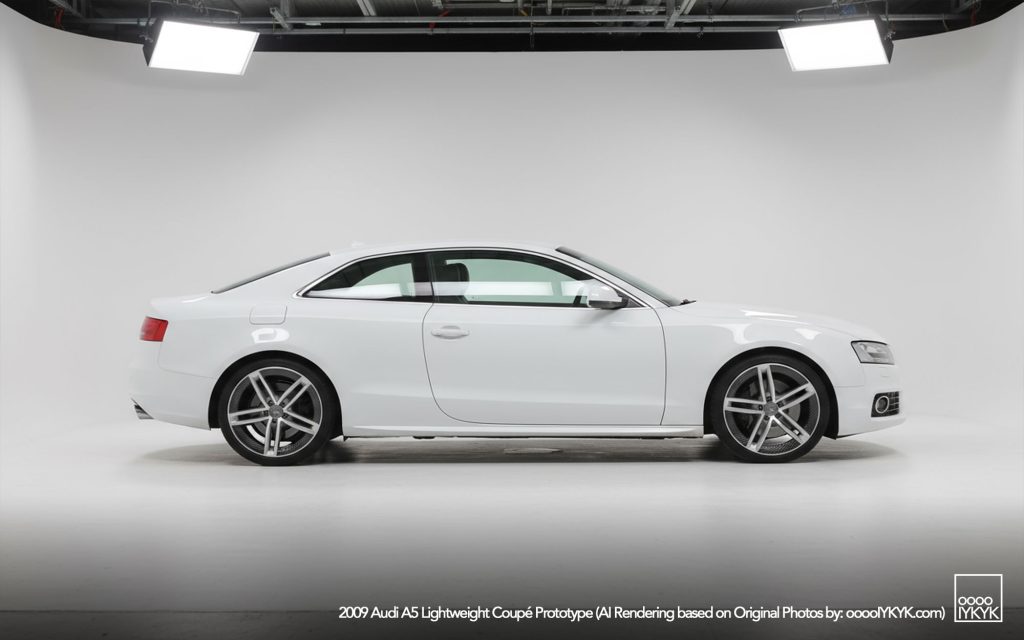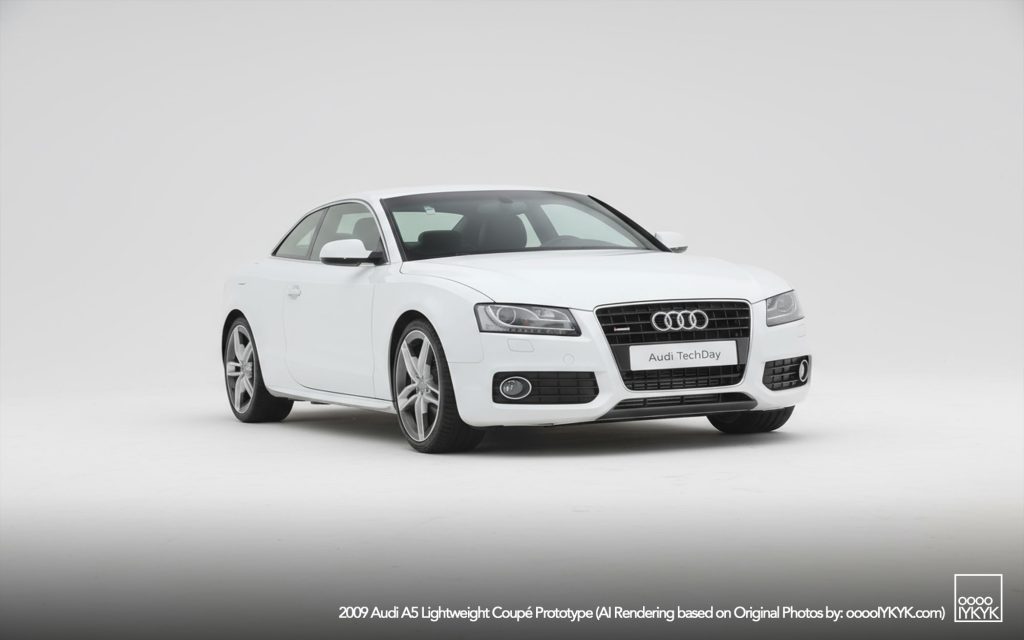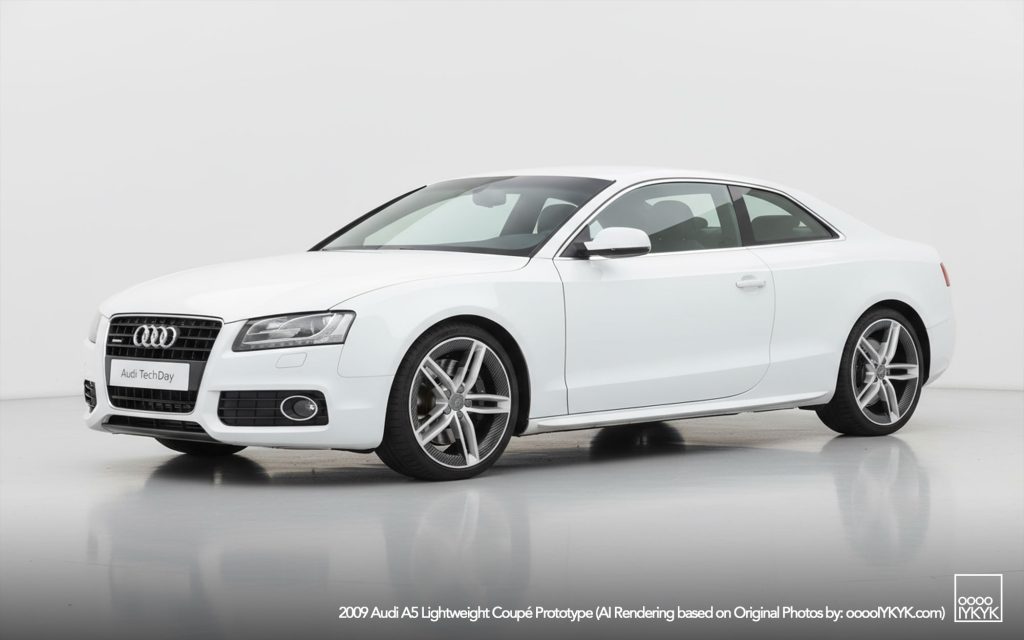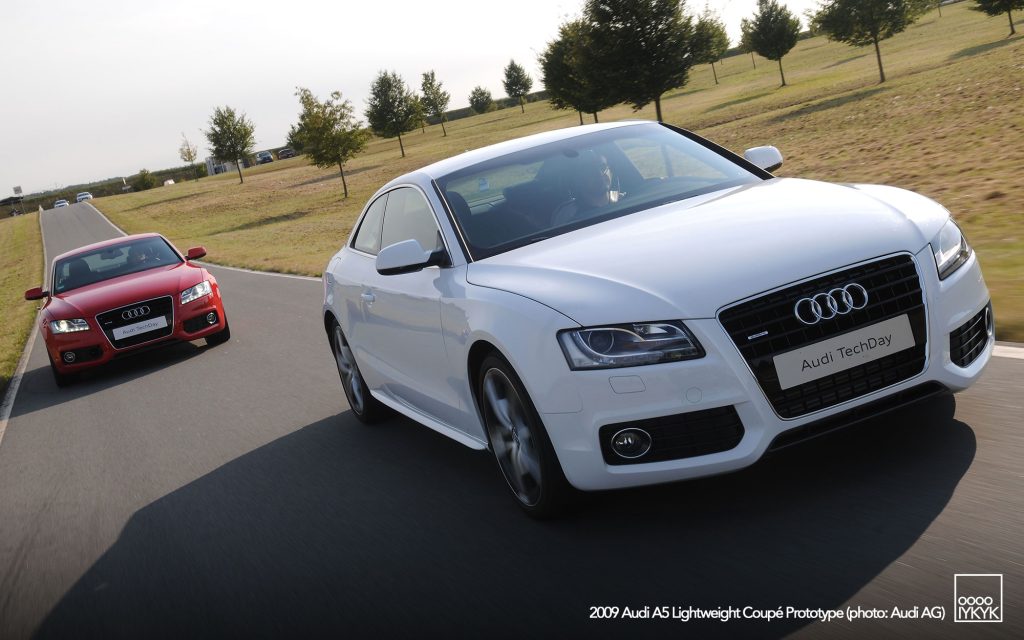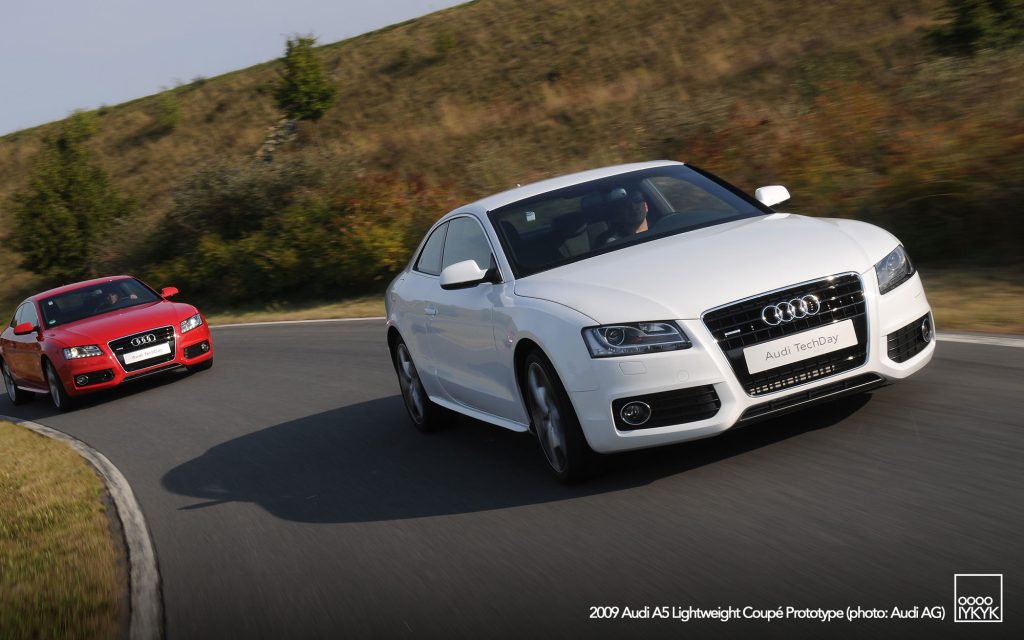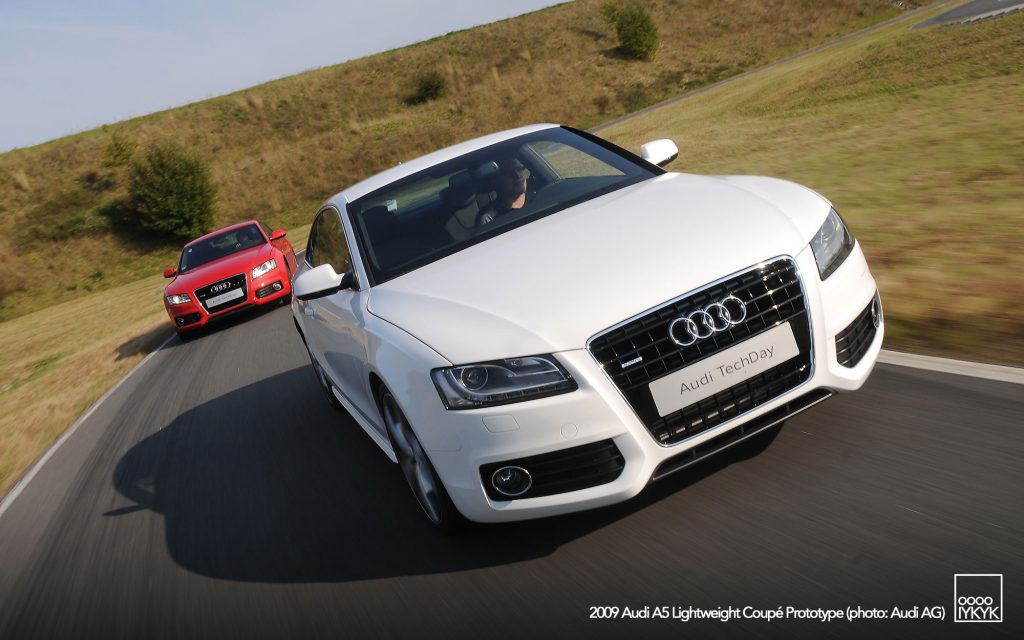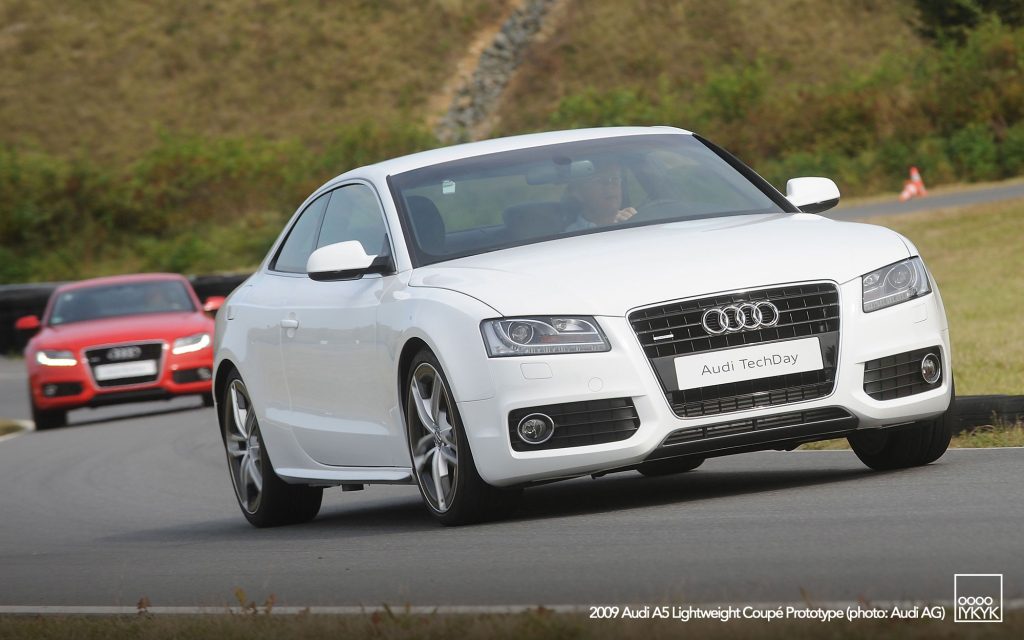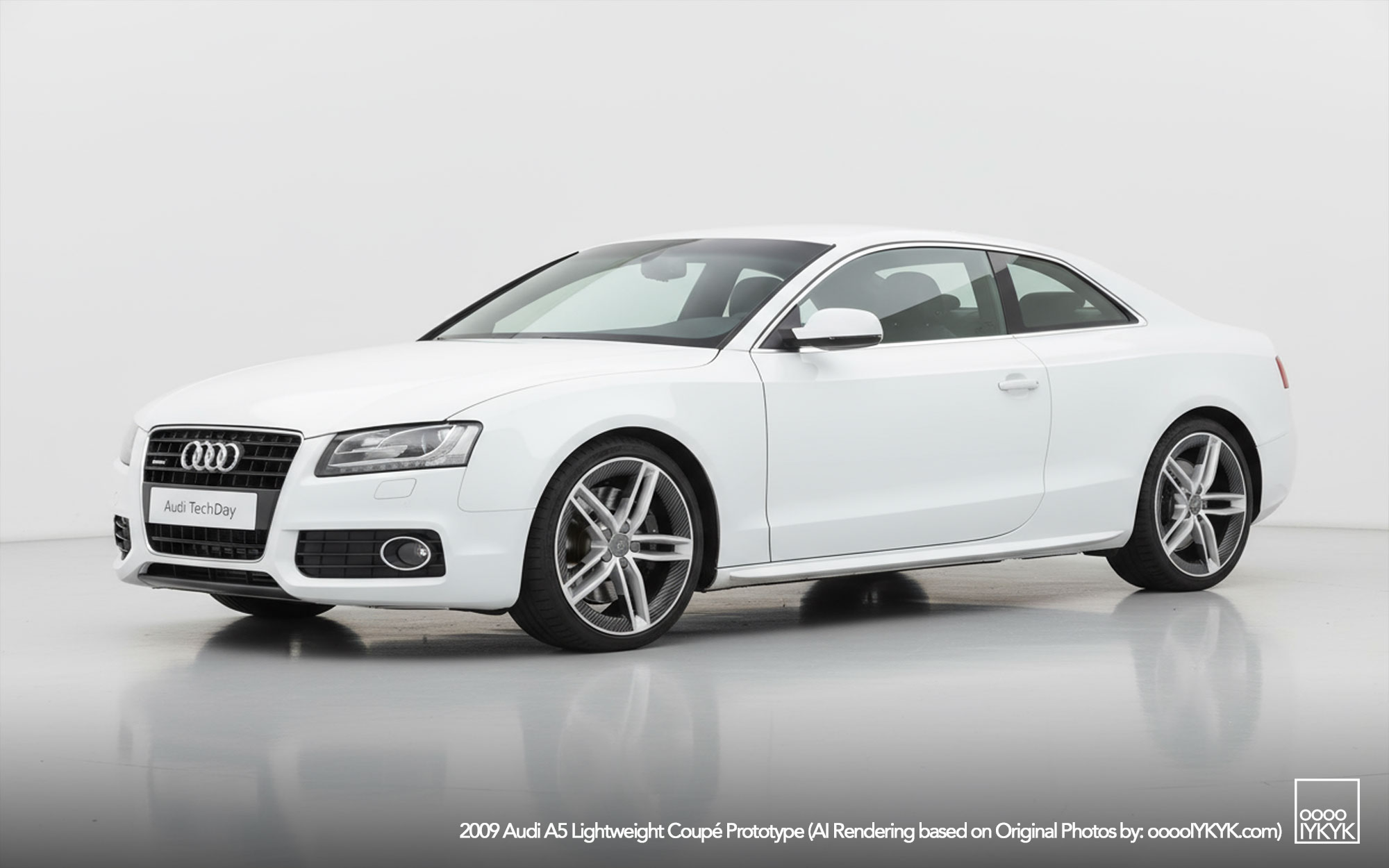What: Audi A5 Lightweight Coupé Prototype
Model Family: A5 (B8, type 8T)
Debuted: N/A
Year: 2009
Registration Plate: Unknown
Status: Believed Destroyed
Number Produced: Possibly 4
Model / Generation Code(s): type 8T
Chassis / Matrix: B8, MLB / MLB Evo Prototype
Engine: 2.0 TFSI EA888
Transmission: 6-speed manual
Power: 211 hp (157 kW)
Peak Torque: unknown
Weight: 2,888 lb (1,310 kg)
Acceleration (0-100 km / 62 mph: unknown
RELATED
Concept Cars: A5 A5 2.5 TFSI prototype “The Beast”, quattro Concept (2011)
Road Cars: A5 (type 8T), S5 (type 8T), RS 5 (type 8T)
Race Cars: none
SUMMARY
The Audi A5 Lightweight Coupe Prototype was an experimental research vehicle built by Audi AG in 2009 to explore the use of lightweight construction in a mid-size coupe. Developed under the direction of Michael Dick, then Audi Board Member for Technical Development, the car was part of Audi’s continued evolution of its Aluminum Space Frame (ASF) technology and its broader strategy to improve efficiency through material innovation. The vehicle debuted to the motoring press during an Audi TechDay on lightweight construction at the Bosch Boxberg Proving Grounds in Germany, a closed test facility typically used for engineering evaluation rather than media demonstrations.
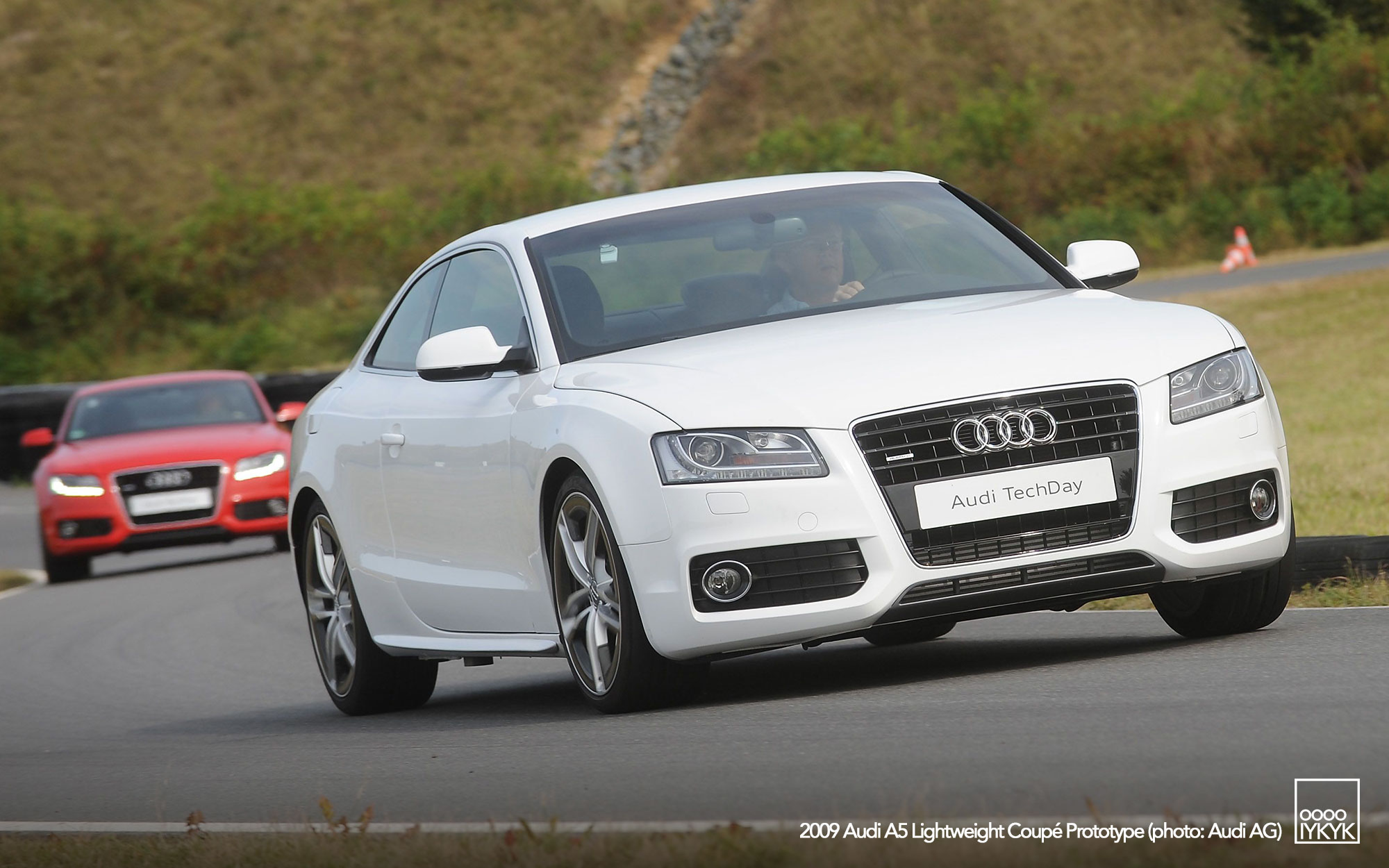
BACKGROUND
Audi’s interest in aluminum construction dated back to the early 1990s, beginning with the 1991 Avus quattro concept. The company put this technology into series production with the 1994 Audi A8, establishing itself as a leader in lightweight design. Later models, including the second-generation Audi TT and the Audi R8, incorporated ASF architecture in combination with steel and composite materials.
By the late 2000s, Audi sought to bring these materials into its mainstream lineup. The A5 Lightweight Coupe Prototype was created to demonstrate how significant weight reduction could be achieved within the structure of an existing production car without altering its exterior form or daily usability.
DESIGN & CONSTRUCTION
Externally, the prototype closely resembled a standard A5 3.2 quattro S line, apart from subtle differences such as S5-style quad exhaust outlets, 19-inch alloy wheels with carbon-fiber inserts, and minor visible aluminum accents. Beneath the surface, however, the vehicle’s structure was entirely re-engineered.
The A5 Lightweight Coupe Prototype featured a bespoke aluminum space frame combined with carbon-fiber-reinforced plastic (CFRP) body panels, including the hood, and numerous lightweight composite components throughout its construction. This approach reduced the car’s total curb weight to 2,888 lb (1,310 kg)—around 500 lb (230 kg) less than the steel-bodied A5 3.2 quattro. The reduction also allowed smaller, lighter supporting components such as the transmission and suspension assemblies, amplifying the benefits of mass reduction across the car.
POWERTRAIN & SPECIFICATIONS
The prototype was powered by a 2.0-liter turbocharged inline-four (EA888) engine producing 211 hp (157 kW), paired with a six-speed manual transmission and quattro all-wheel drive. While less powerful than the production A5 3.2’s 3.2-liter V6 with 265 hp (195 kW), the reduced weight resulted in a power-to-weight ratio of 13.69 lb/hp (8.8 kg/kW), comparable to or better than many higher-output models in its class.
The car’s external dimensions matched the production B8-generation A5 Coupe, including:
- Length: 4,625 mm (182.1 in)
- Width: 1,854 mm (73.0 in)
- Height: 1,372 mm (54.0 in)
- Wheelbase: 2,751 mm (108.3 in)
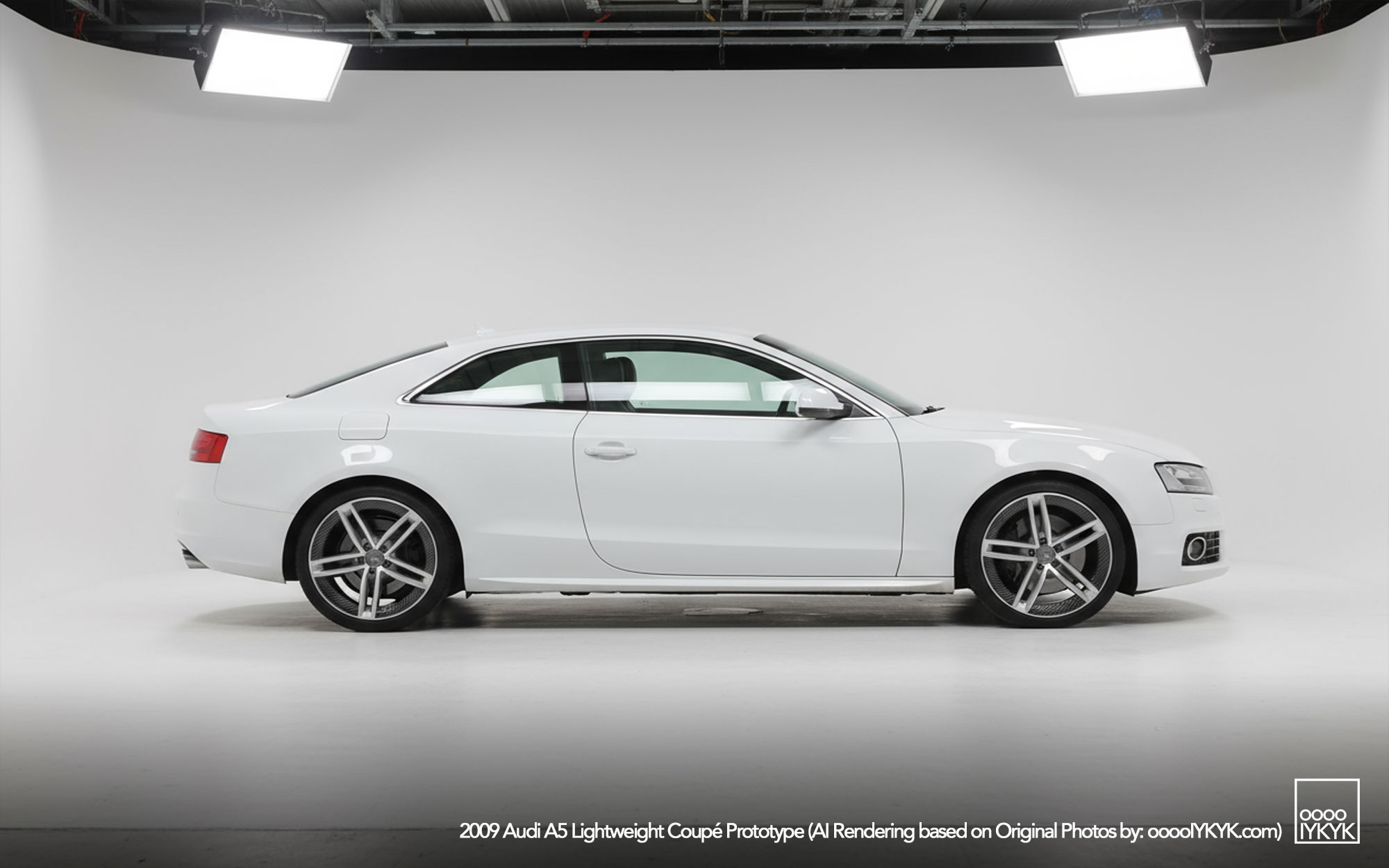
EFFICIENCY & DEVELOPMENT IMPACT
Audi engineers estimated that every 100 kg (220 lb) reduction in vehicle weight corresponded to a 1.3 to 2.1 gallonreduction in fuel consumption per 100 miles, supporting the company’s belief that efficiency gains could be achieved without reducing size or performance.
Although the A5 Lightweight Coupe Prototype remained a one-off research vehicle, the lessons learned from its construction influenced Audi’s later use of mixed-material architectures. Subsequent production models incorporated combinations of aluminum, high-strength steel, and composites to balance manufacturing feasibility, performance, and cost.
LEGACY
The A5 Lightweight Coupe Prototype represents a transitional moment in Audi’s engineering history—a bridge between the aluminum-intensive philosophy of the 1990s and early 2000s and the brand’s later focus on electrification and modular platform efficiency. While it was never intended for production, it remains a noteworthy example of Audi’s technical ambition and its belief that performance could be redefined not through power increases, but through intelligent weight reduction—a pure expression of Vorsprung durch Technik.
PHOTO GALLERY
